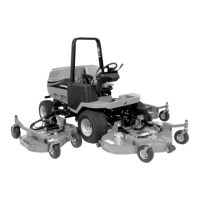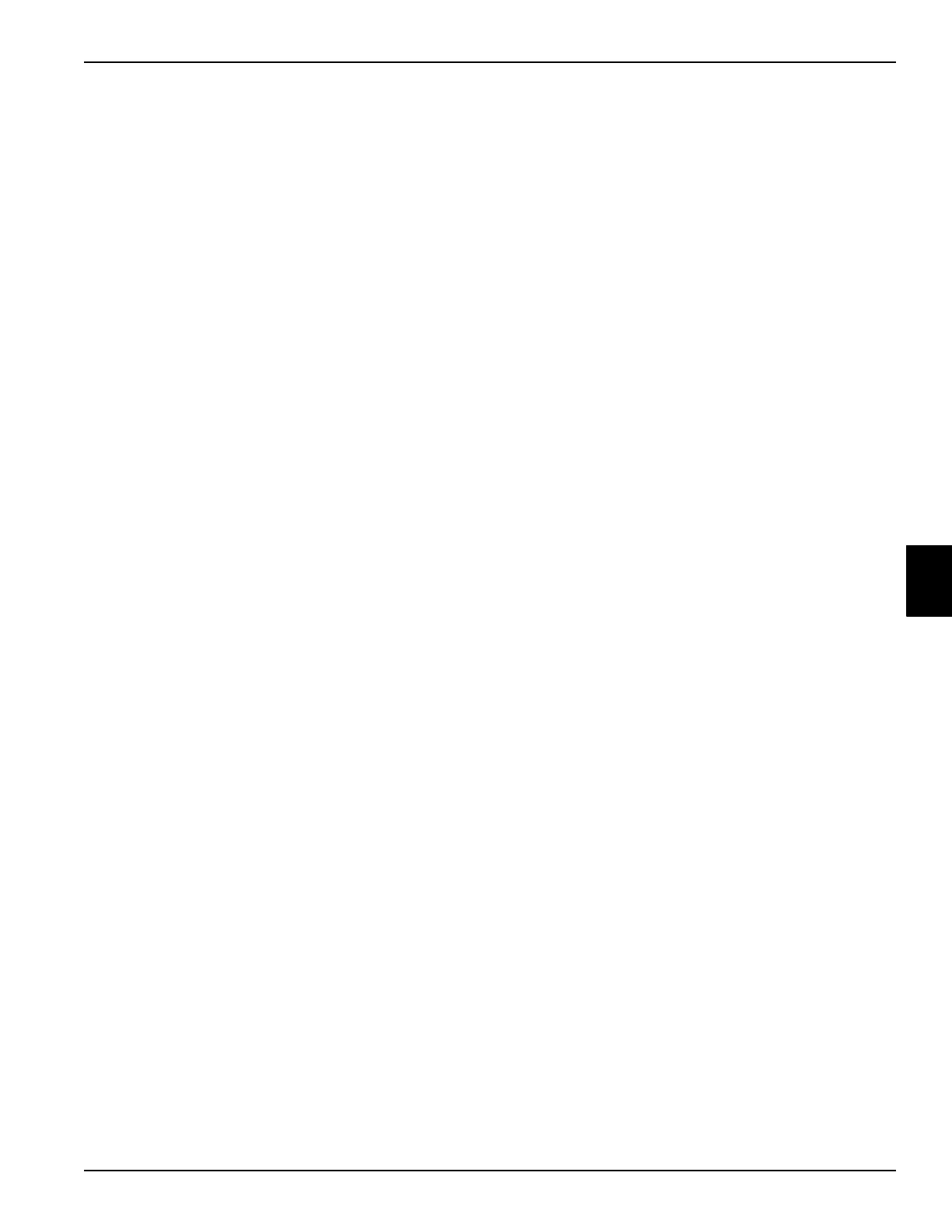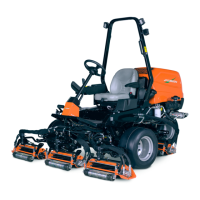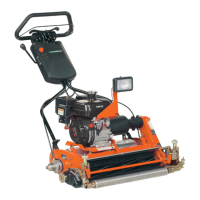HYDROSTATIC POWER TRAIN
4203780 First Edition 5-11
5
Traction Circuit—Forward 2WD
Schematic and Theory of Operation
System Conditions:
• Engine running
• Park brake released
• Traction pedal in FORWARD position
• 2WD/4WD switch in 2WD position
• Differential lock pedal in LOCKED position
(differential lock mode only)
Charge Pressure Circuit
The traction pump and gear pump are both driven by the
engine. One section of the gear pump provides operating
pressure oil for the steering and lift systems, and charge
pressure oil for the traction pump.
Oil is drawn from the hydraulic tank through a 100-mesh
screen, and enters the gear pump, supplying oil to all four
pump sections. Operating-pressure oil from section 1 of
the gear pump is routed to port “P” of the control valve,
flows through the 4.5-gpm priority valve, and out port
“ST” to the steering valve.
Oil flows through the steering valve to the charge filter.
The charge filter uses a 10-micron filter to remove debris
from the oil. In the event of the charge filter becoming
plugged, a 25-psi pressure switch will activate the
“Charge Filter” light on the control panel, and a bypass
valve will open to provide oil to the traction pump and
other systems. Charge-pressure oil is then routed to port
“C” of the 4WD valve, port “F” of the control valve, and
the traction pump.
The control valve also incorporates a charge pressure
switch that will activate the “Charge Pressure” light on the
control panel if the charge oil pressure drops below 125
psi. The control valve also includes a charge relief valve
that will open to dump oil to the hydraulic tank when the
charge pressure reaches 250 psi.
Traction Drive Circuit
When the traction pedal is moved to FORWARD position,
the swash plate is moved, stroking the pump. This
change of the swash plate angle produces an increase of
oil pressure on one side of the pump. Oil at operating
pressure is then routed against the check valve and relief
valve (3500 psi), and exits the traction pump at Port “A.”
The oil is then routed to the front axle drive motor, driving
the motor. Oil exiting the front axle motor is returned to
the traction pump to replenish the intake side of the
pump.
Charge-pressure oil is also supplied to port “C” of the
4WD valve. With the 2WD/4WD switch in the 2WD
position, oil flows through the 4WD reverse solenoid and
secondary 4WD shuttle valves, applying equal pressure
to both sides of the right and left rear wheel motors. This
provides no driving force to the rear wheel motors, but
allows the motors to rotate freely as the mower travels
forward.
Circuit Relief
The traction circuit is protected by a relief valve. The relief
valve will open if the pressure rises to 3500 psi, allowing
oil to dump to the charge side of the circuit.
Differential Lock
Charge-pressure oil is supplied to port “F” of the control
valve, and is routed to the pilot line of the charge relief
valve, charge pressure switch, and the differential lock
solenoid. When the differential lock pedal is depressed,
the solenoid engages, shifting the valve. This allows
charge-pressure oil to flow to the differential lock cylinder,
engaging the differential lock mechanism on the front
axle.

